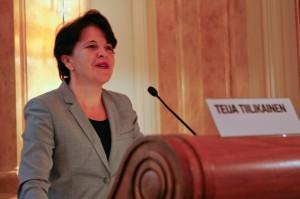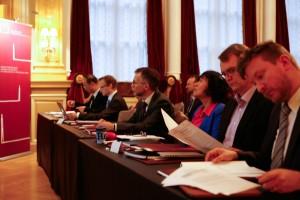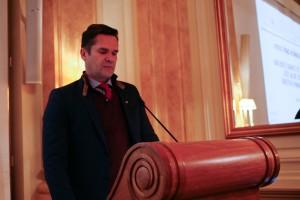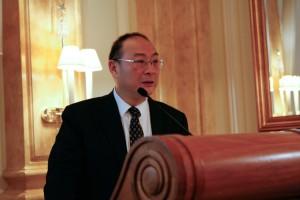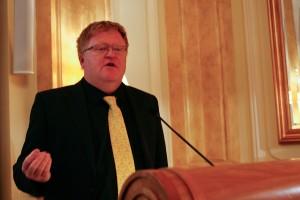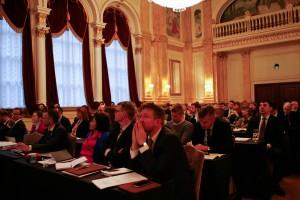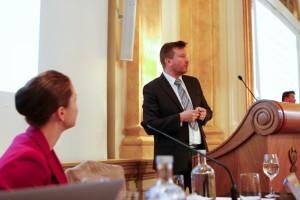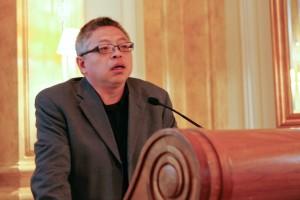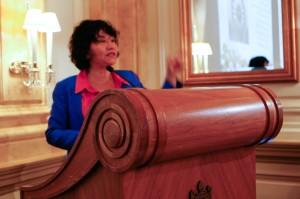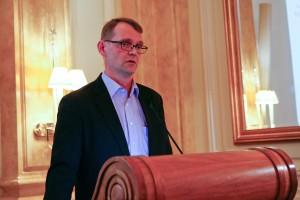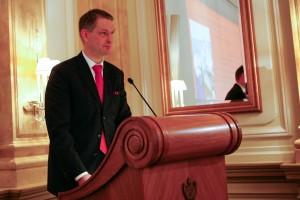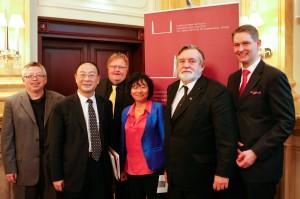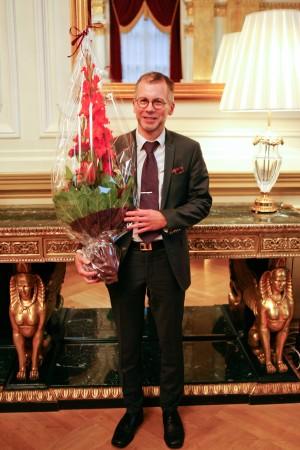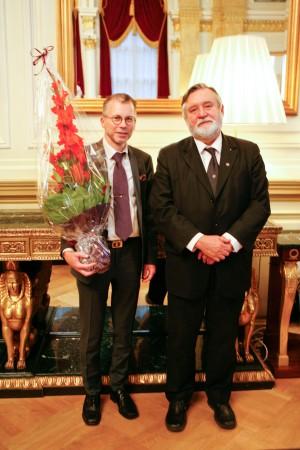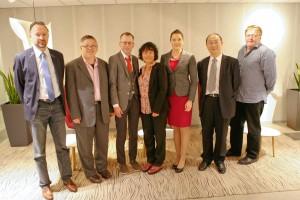China has taken a more global and active foreign policy approach under Xi Jinping. In late 2012 President Xi defined the so-called ‘China Dream’ as achieving a great rejuvenation of the Chinese nation: China should become a prosperous and strong country that satisfies its people’s wish for a good life. However, what ‘prosperous and strong China’ means to the outside world remains obscure. Chinese references to a ‘new type of major power relations’ indicates that Chinese policymakers see China as a great power. In the economic realm the scope and scale of economic involvement have taken a leap forward with the launch of the One Belt, One Road initiative, and the establishment of the New Development Bank and the Asian Infrastructure Investment Bank. In the security realm, China’s military build-up and maritime disputes in the East and South China Seas raise question marks concerning China’s peaceful development. Domestically Xi Jinping has centralized power and tightened censorship. Regions are striving for more independence. China needs to take care of its rapidly ageing population while dealing with a slowing GDP growth. Environmental degradation continues and raises increasing dissatisfaction and protest. Will tightening societal control make China stronger or is it a sign of political crisis? Can domestic reforms be made in the current political atmosphere? Can China maintain the necessary level of economic growth to achieve its dream of prosperity? Will US rebalancing lead to a confrontation with China?
The FIIA China Research Days will examine the domestic and global ramifications of China’s dreams in the Xi Jinping era from political, economic and security-related perspectives.
Programme
Venue: Peilisali, Hotel Kämp (requires registration)
08:45 Tea and coffee, registration
09:15 Welcoming remarks
Teija Tiilikainen, Director, the Finnish Institute of International Affairs
09:30 China in the International Arena: Session 1
Chair: Mika Aaltola, Programme Director, the Finnish Institute of International Affairs
Keynotes:
Jin Canrong, Professor, Renmin University
”China’s New International Role in the Era of Xi Jinping” (TBC)
Shaun Breslin, Professor, University of Warwick
”Living With China as Number Two”
10:30 Tea and coffee
10:50 China in the International Arena: Session 2
Speakers:
Elina Sinkkonen, Senior Research Fellow, the Finnish Institute of International Affairs and Teemu Naarajärvi, Doctoral Candidate, the University of Helsinki
”China’s Foreign Policy Roles Towards Japan, 2002-2015”
Mikael Mattlin, Senior Lecturer, University of Turku
”China’s Turn Towards Becoming a Proactive Financial Power”
12:15 Lunch break
13:45 China’s Dreams, Strategies, and Culture
Chair: Bart Gaens, Senior Research Fellow, the Finnish Institute of International Affairs
Keynotes:
Bai Tongdong, Professor, Fudan University
”Confucian New Tianxia World Order”
Robin Wang, Professor, Loyola Marymount University
”China’s Soft Power: Then and Now”
Speaker:
Matti Nojonen, Professor, University of Lapland
Trends of Strategic Thinking in China – What Can We Learn?”
15:05 Tea and coffee
15:30 Presentation of the Joel Toivola Foundation and awarding the Joel Toivola Centennial Prize
Timo Soikkanen, President, Joel Toivola Foundation
Mikko Eskola, Executive Director, Joel Toivola Foundation
Joel Toivola Centennial Prize Winner
”The Ancient Roots of China’s New Type of International Relations”
16:20 Discussion
17:00 End of Thursday’s seminar day
17:30 Reception at the Ministry for Foreign Affairs of Finland hosted by Peter Stenlund, Secretary of State (by prior registration only)
Conference summary
China in the International Arena: Session 1
China’s New International Role in the Era of Xi Jinping
In the first keynote presentation entitled ”China’s new international role in the era of Xi Jinping”, Jin Canrong started by arguing that China’s current strategy basically followed Deng Xiaoping’s adage of ”keeping a low key strategy”. This focuses on peaceful development, and given that China is still a developing country, on development as priority. Tactics, however, have changed significantly, and are impacted by a focus on foreign policy, a more proactive and comprehensive strategic stance, a tougher approach to China’s ”core interests”, and a new emphasis on Xi’s personal style.
Answering the question whether China is a status-quo power, Jin argued that Beijing accepts the legitimacy of the international regime, because it benefits from it. At the same time it aims to play a more active role, and acquire a stronger voice. The same policy can be seen in regional cooperation efforts. At the same time China displays ambitions to create its own system, including through the Asian Investment and Development Bank, the One Belt One Road initiative, the BRICS Bank, and the forthcoming Shanghai Cooperation Bank.
In short, China aims to achieve ”major power diplomacy with Chinese characteristics”, featuring a more equal partnership and coexistence between different countries (unlike the current hierarchical system). Concretely, China aims to stabilize relations with the US, Russia, and EU (in particular Germany), reshape its neighborhood while creating a global partnership network, and take on international responsibility (but on China’s terms, focusing on the country’s national interests abroad).
Living With China as Number Two
In the second keynote presentation entitled ”Living with China as Number Two”, Shaun Breslin gauged China’s place in the world against the background of global power transitions. He started by arguing that, instead of multipolarity, the world is moving towards more issue-based and functional partnerships and alliances. For example, for Southeast Asian countries China can be at the same time an economic partner and a security threat. This makes it harder to ”place China in a box”. At the same time this multimodal world has neither the ability nor the intent to challenge the US.
Breslin outlined four different understandings or definitions of what it means for China to be a global power. First, domestic actions have global consequences; second, a common sense idea of China generates action; third, others take your interests into account; and fourth, structural power: changing the world. The speaker labeled China as a ”dissatisfied but responsible reformist great power”. He argued that Beijing aims to achieve responsible change from within international institutions, while at the same time creating alternative sources of governance and applying a differentiated diplomatic strategy.
China in the International Arena: Session 2
China’s Foreign Policy Roles Towards Japan, 2002-2015
Elina Sinkkonen and Teemu Naarajärvi presented their paper discussing China’s foreign policy roles towards Japan between 2002 and 2015. Dr Sinkkonen analyzed what has changed during Xi Jinping’s leadership compared to Hu Jintao’s era. China has a more global and active approach under Xi, yet not much has changed in its relations with Japan. In their paper, Sinkkonen and Naarajärvi have taken into account the domestic context out of which the foreign policy arises. During the two leaders’ terms, there have been turbulent events such as anti-Japan demonstrations and the purchase of three disputed islands by Japan. However, economic relations have not been greatly affected by the political turbulence. The two countries are big trading partners and Japan is investing heavily in China. Still, China’s leaders cannot ignore public opinion on Japan or the fact that negative views increased after the 2012 island dispute.
Mr Naarajärvi talked about the Chinese foreign policy leaders’ own perceptions of their roles since 2002. The presidency of Hu Jintao was seen as weak due to the idea of collective leadership. China’s identity was still uncertain: Was it a great power? A developing country? Was it rising, and how? The administration of Hu Jintao issued very few statements toward Japan. While the long history of the countries’ relations was emphasized, bilateral relations stalled because of public opinion, and policy makers had difficulties in finding common ground. Dr Sinkkonen noted that in contrast to the Hu period, thus far the Xi era shows a tendency towards increased centralization of power, e.g. in the creation of the National Security Commission. China has a new great power identity, and relations with the United States have a key emphasis. Mr Naarajärvi continued that China is now making new foreign policy initiatives, but not towards Japan as the external expectations have made it even more difficult. However, both countries are used to the fluctuations in the relationship, and any one issue will not bring it over the top.
China’s Turn Towards Becoming a Proactive Financial Power
Next, Mikael Mattlin talked about China’s turn towards becoming a proactive financial power. He referred to the debate launched by Alistair Iain Johnston in 2003 about whether China is a status-quo power. Scholars have claimed that when it comes to the global financial system China follows a strategy of rational accommodation with some regional hedging.
Dr Mattlin then raised the Chinese currency’s global role as a key issue. In 2009, the governor of China’s central bank criticised the USD-dominated international monetary system. China has made numerous bilateral and international accords promoting the international use of the renminbi. These gradual liberalization measures always go hand in hand with trying to maintain control. The share of the renminbi in financial transactions is now above 2,5 percent of global financial transactions. Capital outflow is, however, now complicating currency internationalization efforts.
Dr Mattlin concluded by saying that until recently, China’s role in global finance was defensive and reactive. After the change of leadership, the approach has been more proactive: consolidation of the Chinese currency in global financial flows, establishing new multilateral financial institutions, such as the AIIB and the New Development Bank, and the merging of financing and ideas.
A discussion on the themes of the morning sessions followed. As China’s interests overseas grow with time, a change in the Chinese policy of non-intervention is possible, but this would require a UN Security Council Resolution, Jin Canrong argued in response to a question. The internationalization of the Chinese currency was further discussed. Mikael Mattlin did not consider that the renminbi could become an alternative for the dollar in the foreseeable future. A question was asked regarding the role of small countries in China’s foreign policy. Elina Sinkkonen pointed out that the role of some small players may change in the future, for example if China joins the competition for Arctic resources. Other issues that were raised included the challenges facing Chinese technological innovation, the relationship with North Korea, and the way domestic discussions affect foreign policy.
China’s Dreams, Strategies, and Culture
Confucian New Tianxia World Order
Bai Tongdong started by referring to the discussion on whether China is a nation-state or not. On the one hand, Lucian Pye famously stated that China is a civilization pretending to be a nation state. On the other hand, many people outside of China are concerned over the rise of China because no nation-state has ever risen peacefully. The question is, does modernization require passing through a nation-state phase, and does becoming a nation-state require nationalism? According to Bai, the solution to the dilemma can be found by studying pre-Qin history.
The Warring States era resembled modern times with its competing states, and it then became necessary to deal with state-to-state relations. Although there was no nationalism, the inhabitants of one state would still differentiate themselves from the others by following the hierarchical Mencian ideal of compassion: while everyone has the seed of compassion towards others, one should care for one’s close relations more than others. This, according to Bai, formed a ”weak” version patriotism. At the same time, all the states were bound together by culture and civilization and thus formed a union against the surrounding barbarian tribes.
Bai stressed that the difference between this kind of a cultural identity and the nationalist identity based on race is that the former is inclusive while the other is exclusive. Anyone can join the civilization by becoming civilized. Today, a similar principle should be applied to the world community. Instead of the UN model where every country is an equal member, the world should be hierarchical with the civilized–whatever their criteria–at the top. This is what he called a New Tianxia World Order. According to Bai, respect for another country’s sovereignty should be conditional to compassion, and he took North Korea as an example of a country whose sovereignty would not need to be respected in a Tianxia system. Bai reiterated that the Tianxia system would be universal but not equal, because it is unrealistic to expect all people to be able to treat everyone else as equals.
China’s Soft Power: Then and Now
Robin Wang discussed China’s soft power especially from a Daoist perspective. According to Wang, ancient Chinese thinkers are celebrated for their syncretism and the corresponding ability to act as bridge-builders. According to Wang, the roots of China’s soft power can be found in the Daoist values of softness and yielding while at the same time aiming at winning. The adage ”taoguang yanghui” (to hide the brightness and foster furtiveness), discussed earlier, is an example of using yin (darkness, i.e. furtiveness) to achive yang (light, i.e. brightness). Wang discussed the imagery of Dao: wheel, water and feminine, all indicating change and uncertainty.
Wang remarked that the Daodejing which is most translated book after the Bible due to its mystical-philosophical nature is actually a guidebook for rulers. This is understandable because the Chinese society operates by hidden principles, like guanxi (networks). The ruler’s highest virtue is like water, which can overcome hard rock although it is soft itself. Similarly, it is good to remember that living trees are soft and flexible, and die when they become too rigid. In Chinese politics, adopting flexibly to new circumstances is known as doing things ”with Chinese charateristics”.
Wang also discussed a new phenomenon in the Chinese society, a female Daoist practice called Kundao. Women who practice Kundao refuse their roles as wife and mother, and therefore, the practice is a form of empowerment. There is currently one academy in China which teaches women the practice.
Trends of Strategic Thinking in China
Matti Nojonen began by discussing the difficulties in studying strategic cultures. The usual way in political science is to regard the decision-making processes of a state as a ”black box” which can only be studied from the outside by looking at the actions of a state, and then trying to see which strategies from the classics might explain the behavior. Nojonen called for another approach, studying strategy concepts inside the ”black box”, aiming to find out how conceptual structures guide cognitive processes.
Nojonen emphasized that China has its own endogenous strategic thinking. There are 500 strategy works still in existence, and they from their own conceptual universe. At the meta-level, the strategic values include flexibility, unpredictability, utilizing weaknesses, constant movement, and pragmatism. These values are reflected in the Chinese market system, and fit well in a non-democratic system where people had better keep their heads down.
Nojonen remarked that Western strategic thinking, especially in the form of the Positioning School, is also very popular in China as it is suitable to the top-down-led processes of a planned economy and a one-party system. The term in vogue is ”national comprehensive power” which tells how to benchmark China against others.
Nojonen concluded that China’s strength lies in the capability of combining the Chinese strategic behavior, based on moulüe (stratagems, maskirovka), and the Western Positioning School.
The Joel Toivola Centennial Prize
The Ancient Roots of China’s New Type of International Relations
Jyrki Kallio began by listing some foreign policy concepts which have grown in prevalence during the Xi Jinping era, including the new type of international relations, the commonwealth of destiny of the mankind, and the correct handling of interests and justice. He then discussed the origin of these concepts, pointing out that they predate Xi.
According to Kallio, the underlying themes in these three concepts are encapsulated in the ancient adage which Xi Jinping used in his recent UN address, ”the greatest ideal is to create a world truly shared by all”. Kallio pointed out that the adage is actually a quotation from Confucius, Tianxia wei gong (All-Under-Heaven is communal). Kallio discussed the different interpretations of the adage, and noted that today many Chinese thinkers want to expand the adage into a form of cosmopolitanism. He objected to this view and explained that in the view of some Chinese scholars, the phrase was originally domestic in nature and referred to the principle that the empire should be nobody’s monopoly.
Kallio concluded by stating that while Xi Jinping’s ”new type of international relations” are supposed to be new, and they are supposed to be Chinese, what is new is in many ways the logical continuation in the long process of modern China finding its place in the world, and the Chinese-ness is often no more than an edifice that has been necessary to put up in order to make the ideas behind it look domestically grown, and give them historical clout.
